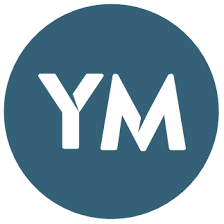Free
It's free to download
Technical
Print Details:
Layer Height: 0.15mm
Infil: Tri Hexagon
Infill Density: 75%
Supports: Touching Build Plate, Overhang Angle: 50%
Build Adhesion: Brim
Body: 97.1(W) x 121.7(L) x 44.4(H) mm, Weight: 137g, Print Time: ~12Hr*
Fins: 86.6(W) x 60.8(L) x 23,4(H) mm, Weight: 22g, Print Time: ~2.5Hr*
Tail: 51.8(H) x 60.9(L) x 22(L) mm, Weight: 14g, Print Time: ~2hr*
*Time per part applying the previous details.
Print times are approximate and or subject to variations in hardware, software and user settings.
Two of each part is required to be printed for a total of six parts to create two whales.
Post Processing
Sanding will be required to remove the support material and any aberrations and widening of openings for the screws.
Any uneven areas are filled in with epoxy (Grey in this case to match the PLA filament), and once set are sanded smooth.
Assembly:
The pectoral fins are inserted through the hole in the main part of the body and are a tight fit to minimise slippage once inserted. As such some sanding will be required to enable final adjustments.
As its a tight fit no gluing will be required although filling around the fins and body will be required to cover in any gaps between the two.
The fins are orientated with the tips pointing backwards such that with the top of the head on a flat surface the whale will sit in a stable position with the tail positioned over the head.
The tail fin is glued to the tail stock and once set will require filling around the tail and tail stock to cover in any gaps.
Following the attachment of these two parts, sanding will be required to achieve a seamless transition.
Painting:
A wire is then inserted in the hole at the front of the head and bent under the jaw to hold it in place.
To allow the whale to hang free bend the top end and hook it on the wire loop during the painting and drying process.
Prior to applying the paint and after any sanding ensure the surface is clear and dust free by wiping with a cloth and surface cleaner.
Three coats each of Grey undercoat then Blue topcoat allowing each layer to dry for the recommended time.
If there are any sag, runs or blobs once the paint has dried rub these down with sandpaper between coats.
The white paint was only applied to the underbelly of the model by masking the areas not to be painted with tape and aiming the spray nozzle directly at the centreline of the underbelly at a distance. This produces a fine mist that adheres greater at the centreline of the underbelly and less so around the sides, creating a faded effect.
Once the paint is dry the tape is removed and any overspray along the tape edges are smoothed with wire wool then lightly wiped with a cloth and surface cleaner prior to the application of a clear laquer.
Base:
The base is made from a sheet of acrylic cut to form a rectangle of 100(W) x 300(L) x 5(H) mm.
With the head of the whale in line with the longitudinal line running the central length of the rectangle.
The first whale is mounted close to one end of the rectangle rather than in the middle to counter balance the effect of the second whale pulling the structure over.
Into the rectangle are marked two holes with their centres ~12mm in from the long edge and ~40mm in from the short edge using the holes in the fins as guides to drilled 2mm holes to accomodate 2 x M2 x 12mm self tapping screws fixing the fins to the base.
Final Build:
The second whale is positioned such that its tail hangs below and in the opposite direction to the the tail of the first whale using the holes in the tail to align the supporting mono filament which are held in place with M3 x 5mm grub screws.
The grub screws are fitted up through the underside of each tail into which a mono filament has been inserted.
Using the pre designed holes as a guide drill 3mm holes 5mm deep into the underside of the tail fins.
Be careful not to leave the drill bit in too long running at a high speed as this can melt the plastic making the hole wider and/or trapping the drill inside.
Cut a ~50mm length of mono filament and fix it with a grub screw to the tail of the first whale repeat the process at the second hole.
Better to have a length of filament that is too long whereby allowing adjustments to be easily made.
Feed one length through the hole in the second whales tail and secure with a grub screw repeat the process at the second hole. The separation at the two points being ~20mm.
Using the pre designed holes as a guide drill a 3mm hole through the front of the head of the second whale.
Into the hole in the tail stock of the first whale secure ~50mm of mono filament with a grub screw, feed the loose end up and through the hole at the front of the head of the second whale and secure with a grub screw. The separation at this point should be ~15mm.
A plaster based filler can be used to cover the screw heads which should it prove necessary can easily be removed.
The three lengths of mono filament should be tight in order for the second whale to appear to float over the first whale.
If the second whale leans to one side or moves too freely, equalise the lengths of the filament(s) and/or adjust the tension of the filament(s).
Trim off the excess mono filament with cutters.
 Free
Free